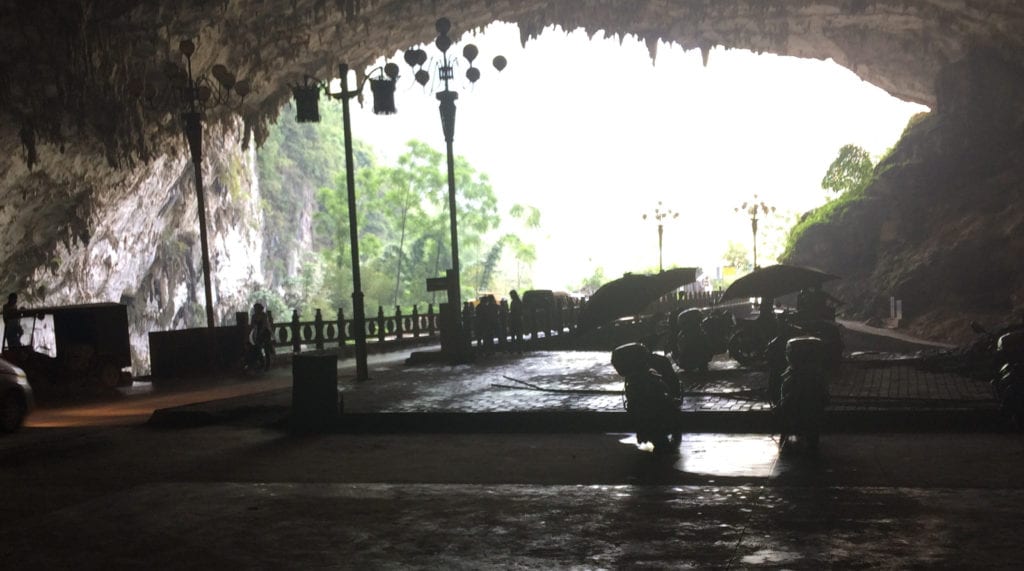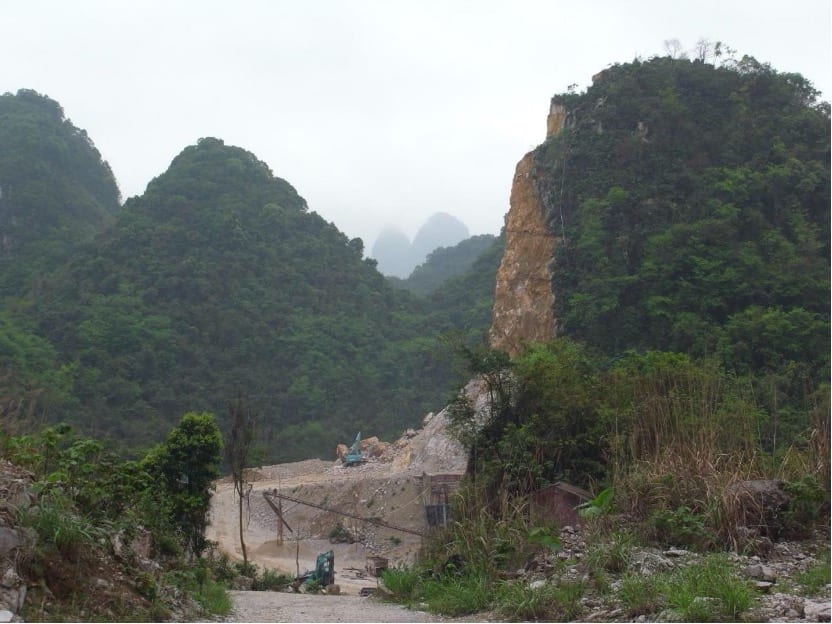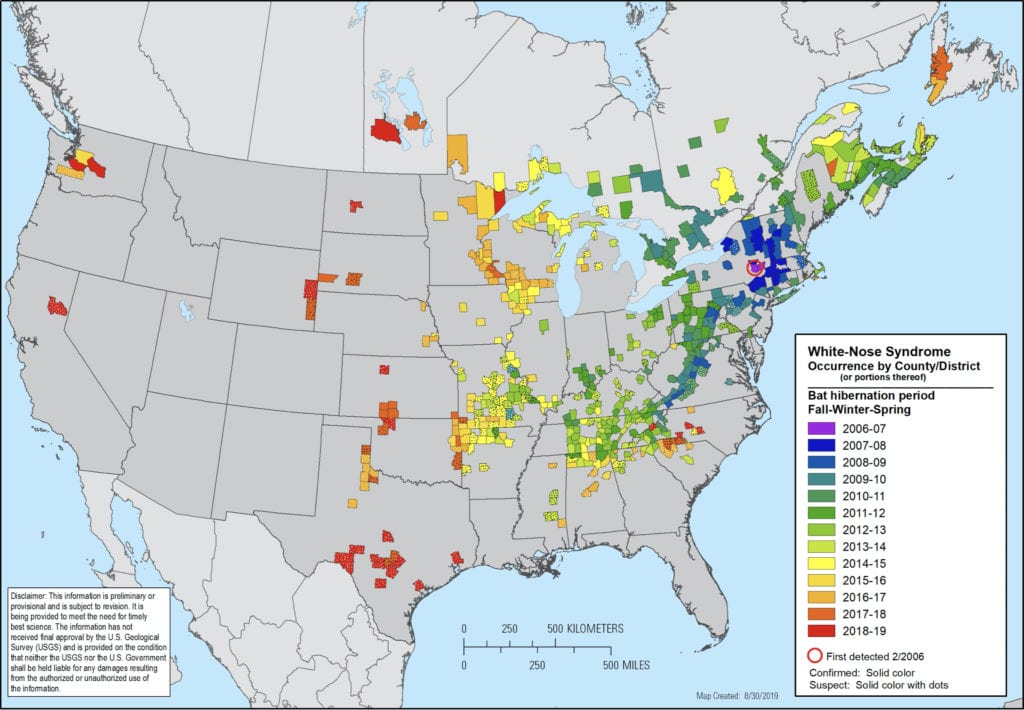
Background
Obligate cave-dwellers (i.e., troglobionts and stygobionts) are among the most fragile and endangered species on Earth. Subterranean-adapted animals have evolved to exist in nutrient-limited environments and often under a narrow set of environmental conditions. Some of these animals are endemic to a specific cave or region. Ergo, dramatic changes in their ecosystems caused by human activities may precipitate some species becoming extirpated from a cave or going extinct.
Human activities negatively impacting cave ecosystems fall into two broad categories – surface activities and interior use/ alteration. These activities can result in degrading suitable subterranean habitats and threatening the persistence of sensitive animal populations. While there are numerous surface impacts, which can degrade/alter cave habitats, the following are among the most detrimental. These include: (i) loss of native surface habitats to urbanization, mining, and other industrial activities; (ii) global climate change; (iii) contamination of heavy metals and agrochemicals (refer to Canstano-Sanchez et al 2020 for a review on this topic) entering subterranean ecosystems from the surface; (iv) water diversion projects and over-pumping of the aquifer; and, (v) introduction of nonnative alien species that compete with or prey upon native subterranean populations.

Intensive human use of caves for recreation and tourism can also adversely affect cave ecosystems. Impacts that may alter ecosystem function include: (a) cave sediment compaction, which can reduce cave fauna productivity, reduce soil microhabitats and may lead to the extirpation or extinction of small, micro-arthropod species (depending upon the degree of soil compaction and species’ sensitivity); (b) artificial lighting and tourism infrastructure (i.e., paving paths, creating additional entrances, altering entrances) can eliminate cave habitats; (c) introduction of molds and other microorganisms may place competitive or predation pressures on native subterranean-dwelling animals; and (d) increased carbon dioxide levels and ambient temperatures (when humans intensively use caves for recreation and tourism) can alter cave microclimates rendering cave habitats inhospitable for cave-obligate animals.
Because this page is not intended to comprehensively examine all of these impacts, but rather to provide an overview of human impacts, only a few are discussed below.
Habitat Loss
Subterranean habitat loss and degradation is a global phenomenon. Because human activities are typically spatially localized, and subterranean-adapted species often have restricted ranges, these activities can be result in the loss of entire species. Most subterranean-adapted animals are considered short-range endemics – meaning that they may occur in a single cave or geological formation and nowhere else on the planet. Therefore, the seemingly moderate impact of the loss of one cave can in fact deliver a crushing blow to biological diversity.

Guangxi Province, China.
For example, in the South China Karst, quarrying and mining activities for concrete production can result in the removal of entire karst formations. To date, this activity is likely responsible for the loss of at least one subterranean-adapted cavefish species.
Similarly, construction activities may directly threaten subterranean ecosystems. Infrastructure development and tunnel drilling have been documented to entirely or partially destroy subterranean habitats. For example, road construction within karst areas of Slovenia resulted in the discovery of more than 350 caves – with many of these features being completely by these activities.
As the human population continues to increase, so will the demand for potable water. Both the water extraction infrastructure and aquifer draw down can reduce the extent and quality of groundwater habitats. There’s at least one case from China, where a cavefish species has not been observed since local villagers installed water extraction infrastructure within the only known location for this species.
Deforestation, in particular, represents one of the major ecological threats to subterranean habitats, especially in tropical areas. In fact, the loss of surface vegetation can quickly result in habitat change (e.g., desertification) that may alter subterranean hydrological regimes and nutrient inputs from the surface.
Overall, large-scale human activities contributing to subterranean habitat loss continues to accelerate globally. These changes will result in subterranean habitat degradation or direct loss, the contraction of populations of some subterranean species, and the extinction of others.

Climate Change
Although caves may be viewed as somewhat buffered environments, the impacts of climate change are expected to be similar to surface environments. As the deeper reaches of caves are typically characterized as climatically stable with minimal fluctuations in temperature, relative humidity, and air flow, animals adapted to this habitat (i.e., terrestrial subterranean-adapted organisms) have evolved within narrow temperature (stenothermic) and relative humidity (stenohygrobic) ranges. Thus, temperature increases and desiccation of terrestrial cave habitats due to global environmental change is expected to have severe negative impacts rippling into subterranean ecosystems. It is expected that some taxa may retreat into the mesocaverns (small cracks, crevices, and pore spaces within the rock), while others will go extinct. Changes in cave climate may also cause indirect effects underground, such as increased colonization of nonnative alien species and increased variability of nutrients reaching cave depths.
Stygobitic (aquatic subterranean adapted) organisms may be similarly impacted by climate change. Increased surface temperatures may result in increased temperatures of groundwater. Furthermore, increase drought conditions may reduce the extent of suitable habitat for aquatic subterranean species.
Finally, cave-roosting bats also have specific habitat requirements for both maternity roosts and hibernacula. Increased surface temperatures and drought conditions are expected to alter internal cave climates, which will likely degrade current cave roost habitat. This will render some cave roosts as unsuitable habitat; subsequently, these roosts will be abandoned.
None of the potential ramifications of global climate change have been sufficiently examined. However, it is reasonable to suggest because organisms reliant on subterranean habitats persist under narrow environmental tolerances, they will be most susceptible to shifting climatic regimes. As a result, these cave-reliant taxa will become imperiled and potentially go extinct. How climate change will impact organisms dependent on this environment, as well as the habitats they depend upon is poised to become an active area of research.
Threats to Cave-Roosting Bats
Globally, bat populations have been in decline for over half a century. Overall, maternity roosts and hibernacula are highly sensitive to human disturbance. Unfortunately, bats are still routinely killed by humans due to numerous misconceptions and myths about these animals. As a result, humans senselessly harassing and killing bats, as well as human use of caves for recreational and tourism purposes contribute to the decline of bat populations.
Even activities as seemingly benign as briefly entering a roost area or shining a light source on a maternity roost can result in permanent bat abandonment. Some bat species (such as the lesser long-nosed bat (Leptonycteris yerbabuenae) of southeastern Arizona and southwestern New Mexico) are hypersensitive to human disturbance and may abandon their roost and offspring when disturbed.
The broadcast use of herbicides and pesticides globally have also contributed to population declines. Bats are pollinators, frugivores (fruit-eating), and insectivores (insect-eating). Bats are exposed to these agrochemicals either directly (e.g., ingestion of contaminated food or water, inhalation of aerosols, dermal absorption, etc.) or indirectly (e.g., ingestion of recently sprayed crops, contaminated prey by adults, and contaminated milk by young). As many bat species are long-lived (e.g., little brown
bats can live for 34 years), these chemicals bioaccumulate over time — reducing their overall fitness and making them susceptible to disease.

Examples of [C] a tricolored bat from a cave at Cloudland State Park, Georgia, 2013 (courtesy Pete Pattavina), and [D] a little brown bat at the Greeley Mine, Vermont, 2009 (courtesy Marvin Moriarty), with fully expressed white-nose syndrome. From Wynne 2017.
In North America, perhaps the greatest immediate threat to bat populations is white-nose syndrome (WNS). This epizootic disease has resulted in the mortalities of more than five million bats in 35 states and seven Canadian provinces. WNS is caused by the cold-adapted fungus Pseudogymnoascus destructans. When P. destructans is fully expressed, it presents as a white fungus that attacks the epithelial layer and digests live skin cells of the rostral muzzle (furless area around the nose), ears, wing membrane, forearms, and uropatagium (tail membrane between the thighs) of hibernating bats. This pernicious infection causes bats to arouse from hibernation, burning invaluable fat reserves. Once these reserves are expended, the bats leave their roosts in search of food and water. As these resources are severely limited to nonexistent during the winter months, the infected bats succumb to the disease.

Bat species presently affected by WNS include the cave myotis (Myotis velifer), Townsend’s big-eared bat (Corynorhinus townsendii), tricolored bat (Perimyotis subflavus), big brown bat (Eptesicus fuscus), little brown bat (Myotis lucifugus), eastern small-footed bat (Myotis leibii), the federally listed (by the US Fish and Wildlife Service) as threatened northern long-eared bat (Myotis septentrionalis), the federally listed as endangered Indiana bat (Myotis sodalis), the federally listed as endangered gray bat (Myotis grisescens), and the federally listed as threatened northern long-eared bat (Myotis septentrionalis). In Canada, the Canadian Cooperative Wildlife Health Centre emergency-listed the tricolored (Perimyotis subflavus), little brown (Myotis lucifugus), and northern long-eared (Myotis septentrionalis) bats as endangered. In both the U.S. and Canada, all of these species have been emergency listed due to the rapid population declines caused by WNS.
